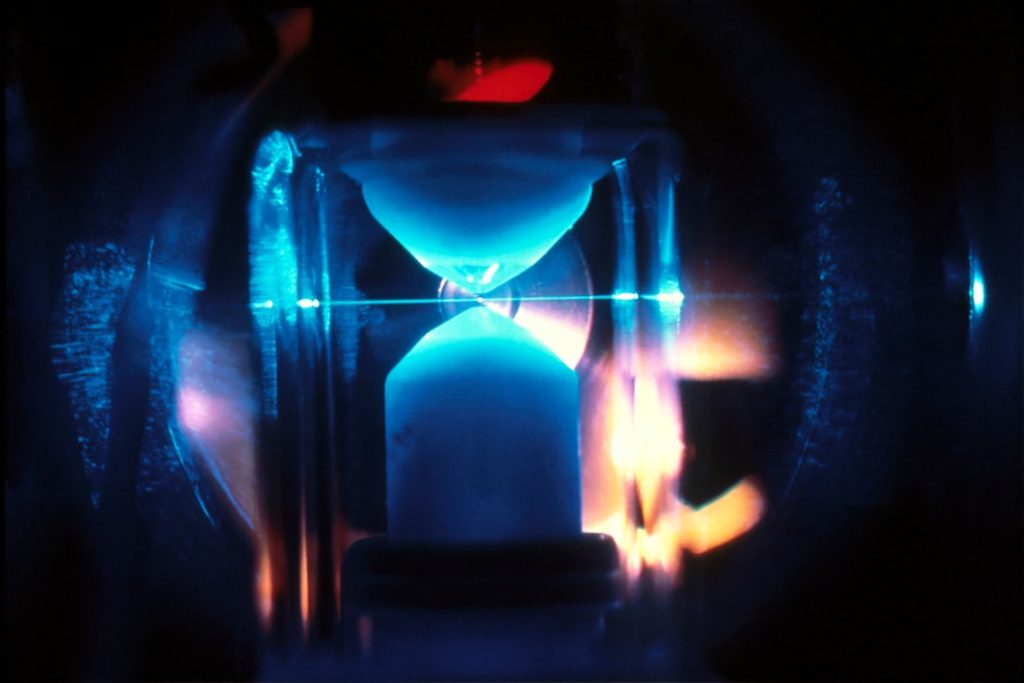The 90s was a decade of cultural and social change, and one of the most influential subcultures to emerge during this time was the goth culture. The goth subculture of the 90s was characterized by its dark, moody aesthetic, and its embrace of alternative music, fashion, and art. Goths in the 90s were often seen as outsiders, rejecting mainstream culture and embracing a sense of otherness. The goth subculture of the 90s was a diverse and vibrant community, with its own unique set of values and beliefs. Goths in the 90s were often drawn to the macabre and the mysterious, finding beauty in darkness and embracing a sense of melancholy. The 90s goth culture was a space for self-expression and creativity, where individuals could explore their own identities and find a sense of belonging.
The 90s goth culture was also deeply influenced by the music of the time, with bands like The Cure, Siouxsie and the Banshees, and Bauhaus providing the soundtrack to the goth lifestyle. The music of the 90s goth culture was characterized by its dark, brooding sound, often featuring haunting melodies and introspective lyrics. Goths in the 90s found solace in this music, using it as a form of catharsis and a way to connect with others who shared their sensibilities. The 90s goth culture was also defined by its fashion and style, with goths often dressing in black clothing, heavy makeup, and elaborate hairstyles. The goth fashion of the 90s was a way for individuals to express their individuality and rebel against societal norms. Overall, the 90s goth culture was a rich and complex subculture that left a lasting impact on the decade and beyond.
Key Takeaways
- 90s Goth culture emerged as a subculture in the 1990s, characterized by its dark and macabre aesthetic, music, and lifestyle.
- Fashion and style in 90s Goth culture included black clothing, heavy makeup, and accessories such as chokers, fishnet stockings, and platform boots.
- The music and subculture of 90s Goth culture revolved around bands like The Cure, Siouxsie and the Banshees, and Bauhaus, with themes of melancholy and introspection.
- The impact of 90s Goth culture on mainstream society can be seen in the influence on fashion, music, and art, as well as the portrayal of goth characters in popular media.
- The evolution and legacy of 90s Goth culture continue to influence alternative subcultures and inspire contemporary fashion, music, and art movements.
Fashion and Style in 90s Goth Culture
The fashion and style of the 90s goth culture were a key aspect of the subculture’s identity. Goths in the 90s often embraced a dark and dramatic aesthetic, with black being the predominant color in their wardrobe. The goth fashion of the 90s was characterized by its use of leather, lace, velvet, and other luxurious fabrics, as well as its incorporation of Victorian and medieval-inspired elements. Goths in the 90s often wore elaborate and ornate clothing, such as corsets, long flowing skirts, and dramatic coats. The goth fashion of the 90s was a way for individuals to express their creativity and individuality, as well as to rebel against societal norms.
In addition to their clothing, goths in the 90s also embraced a distinctive style of makeup and hair. Heavy eyeliner, dark lipstick, and pale foundation were common elements of goth makeup in the 90s, creating a dramatic and striking look. Goths in the 90s also often styled their hair in elaborate and unconventional ways, such as backcombing, teasing, and using hair accessories like ribbons and bows. The goth fashion and style of the 90s were a way for individuals to express their inner darkness and embrace a sense of otherness. Overall, the fashion and style of the 90s goth culture were an integral part of the subculture’s identity, allowing individuals to express themselves creatively and authentically.
Music and Subculture in 90s Goth Culture
The music of the 90s goth culture played a central role in shaping the subculture’s identity and sense of community. Bands like The Cure, Siouxsie and the Banshees, Bauhaus, and Sisters of Mercy were among the most influential in defining the sound of 90s goth music. The music of the 90s goth culture was characterized by its dark and brooding sound, often featuring haunting melodies, introspective lyrics, and atmospheric instrumentation. Goths in the 90s found solace in this music, using it as a form of catharsis and a way to connect with others who shared their sensibilities.
The music of the 90s goth culture also played a key role in creating a sense of community among its members. Goths in the 90s often gathered at clubs, concerts, and festivals to listen to their favorite bands and connect with others who shared their love for dark and alternative music. These gatherings provided a sense of belonging and camaraderie for goths in the 90s, allowing them to express themselves freely and find acceptance within their subculture. Overall, the music of the 90s goth culture was a powerful force that helped to shape the subculture’s identity and create a sense of community among its members.
Impact of 90s Goth Culture on Mainstream Society
| Aspect | Impact |
|---|---|
| Fashion | Popularized dark, edgy clothing and accessories such as black clothing, leather, studs, and heavy boots. |
| Music | Introduced mainstream society to gothic rock, industrial, and darkwave music genres. |
| Attitude | Encouraged individualism, non-conformity, and a focus on introspection and emotional expression. |
| Art and Literature | Influenced mainstream art and literature with themes of darkness, romanticism, and the macabre. |
| Subculture | Spawned a dedicated subculture with its own distinct identity and community. |
The impact of 90s goth culture on mainstream society was significant, as it challenged traditional notions of beauty, fashion, and identity. The dark and moody aesthetic of 90s goth culture influenced mainstream fashion, with elements such as black clothing, heavy makeup, and dramatic hairstyles becoming popularized in the mainstream. The influence of 90s goth culture on mainstream fashion can still be seen today, with designers and brands continuing to draw inspiration from its dark and dramatic aesthetic.
In addition to fashion, the music of 90s goth culture also had a lasting impact on mainstream society. Bands like The Cure and Siouxsie and the Banshees achieved commercial success during the 90s, bringing their dark and brooding sound to a wider audience. The influence of 90s goth music can still be heard in contemporary music, with artists across genres drawing inspiration from its haunting melodies and introspective lyrics. Overall, the impact of 90s goth culture on mainstream society was significant, challenging traditional notions of beauty and identity while leaving a lasting impression on fashion and music.
Evolution and Legacy of 90s Goth Culture
The legacy of 90s goth culture continues to be felt today, with its influence extending beyond fashion and music into art, literature, and film. The dark and moody aesthetic of 90s goth culture has inspired countless artists across mediums, with its themes of darkness, melancholy, and otherness resonating with audiences around the world. The legacy of 90s goth culture can be seen in contemporary art movements such as dark romanticism and Gothic revivalism, which draw inspiration from its macabre sensibilities.
In addition to art, literature has also been deeply influenced by the legacy of 90s goth culture. Authors such as Anne Rice and Neil Gaiman have drawn inspiration from the themes of darkness and otherness that defined 90s goth culture, creating works that explore similar themes of melancholy and mystery. The legacy of 90s goth culture can also be seen in film, with movies such as “The Crow” and “Interview with the Vampire” drawing on its dark and brooding aesthetic to create compelling narratives that continue to resonate with audiences today. Overall, the evolution and legacy of 90s goth culture continue to be felt across various artistic mediums, inspiring creators to explore themes of darkness, otherness, and melancholy.
Misconceptions and Stereotypes about 90s Goth Culture

Despite its rich history and cultural significance, 90s goth culture has often been misunderstood and misrepresented by mainstream society. One common misconception about 90s goth culture is that it is solely focused on darkness and morbidity. In reality, 90s goth culture is a complex subculture that embraces a wide range of emotions and experiences, including beauty, creativity, and individuality. Goths in the 90s often found solace in their subculture’s embrace of darkness as a way to explore their own identities and express themselves authentically.
Another misconception about 90s goth culture is that it is inherently negative or nihilistic. While elements of darkness and melancholy are certainly present in 90s goth culture, they are not indicative of an overall negative worldview. Goths in the 90s often found beauty in darkness and embraced a sense of otherness as a way to connect with others who shared their sensibilities. The misconceptions and stereotypes about 90s goth culture have often led to its marginalization within mainstream society, but they do not accurately reflect the rich history and cultural significance of this vibrant subculture.
Revival of 90s Goth Culture in Contemporary Society
In recent years, there has been a revival of interest in 90s goth culture within contemporary society. This revival has been driven by a renewed interest in alternative fashion, music, and art that embraces themes of darkness, otherness, and melancholy. Contemporary designers have drawn inspiration from the dark and moody aesthetic of 90s goth culture, incorporating elements such as black clothing, heavy makeup, and dramatic hairstyles into their collections. This revival has brought renewed attention to the rich history and cultural significance of 90s goth culture.
In addition to fashion, there has also been a resurgence of interest in 90s goth music within contemporary society. Bands like The Cure and Siouxsie and the Banshees continue to have a dedicated fan base, while new artists have emerged who draw inspiration from the haunting melodies and introspective lyrics that defined 90s goth music. This revival has brought renewed attention to the enduring influence of 90s goth music on contemporary music across genres. Overall, the revival of interest in 90s goth culture within contemporary society reflects a renewed appreciation for its rich history and cultural significance.
In conclusion, the 90s goth culture was a diverse and vibrant subculture that left a lasting impact on fashion, music, art, literature, film, and mainstream society as a whole. Despite misconceptions and stereotypes about its focus on darkness and morbidity, 90s goth culture embraced themes of beauty, creativity, individuality, darkness, otherness, melancholy which continue to resonate with audiences today. Its legacy continues to be felt across various artistic mediums inspiring creators to explore themes that challenge traditional notions of beauty while leaving an indelible mark on contemporary society through its revival in fashion trends as well as music genres that continue to draw inspiration from its haunting melodies and introspective lyrics.
If you’re interested in learning more about 90s goth fashion, you should check out this article on petersacstyli.com. It provides a comprehensive overview of the iconic style, including the key elements and influences that defined the look during that era. Whether you’re a longtime fan of goth fashion or just curious about its history, this article is a must-read for anyone interested in the subculture.
FAQs
What is 90s goth?
90s goth refers to the subculture and fashion movement that emerged in the 1990s, characterized by its dark and moody aesthetic, influenced by gothic and alternative music, literature, and art.
What are the key elements of 90s goth fashion?
Key elements of 90s goth fashion include black clothing, fishnet stockings, platform shoes, dark makeup, and accessories such as chokers, spiked bracelets, and silver jewelry.
What are some iconic 90s goth bands and musicians?
Iconic 90s goth bands and musicians include The Cure, Siouxsie and the Banshees, Bauhaus, Sisters of Mercy, and Marilyn Manson, among others.
How did 90s goth culture influence mainstream fashion and music?
90s goth culture had a significant influence on mainstream fashion and music, with elements of goth fashion and music being incorporated into popular culture, influencing trends in the 1990s and beyond.
Is 90s goth still relevant today?
Yes, 90s goth continues to have a lasting impact on fashion, music, and subcultures, with many elements of 90s goth still being embraced and celebrated by individuals and communities around the world.






